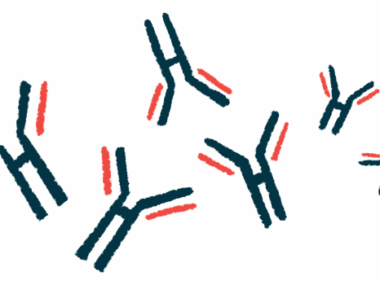Impairment in nerves that regulate heartbeat common in Fabry disease
Heart damage may cause the left ventricle to become enlarged
Written by |

People with Fabry disease often have impairment in the nerves that help regulate heartbeat, which may serve as a prognostic measure to assess heart problems in the disease, a study reports.
Mild problems with heart nerves were found in many patients in the disease’s earlier stages who didn’t have notable heart health problems. More substantial nerve issues were only seen in those who already had fairly advanced Fabry disease and heart fibrosis (scarring).
The study, “Detection of sympathetic denervation defects in Fabry disease by hybrid [11C]meta-hydroxyephedrine positron emission tomography and cardiac magnetic resonance,” was published in the Journal of Nuclear Cardiology.
Fabry disease is caused by genetic mutations that result in certain fatty molecules building up to toxic levels in different tissues and organs, including the heart.
In Fabry, the heart’s lower left chamber, or left ventricle, may become enlarged (left ventricular hypertrophy, or LVH) and the heart muscle unusually thick as a result of heart damage. In severe cases, fibrosis may develop.
The heartbeat is regulated by various nerves, including those of the sympathetic nervous system, which is responsible for activating the body’s “fight or flight” instincts. Heart tissue damage may result in sympathetic denervation, where fewer of these nerves make healthy connections with heart tissue.
The researchers used a new imaging technique to assess sympathetic denervation in people with Fabry disease. The technique combines magnetic resonance imaging (MRI) with positron emission tomography (PET) and uses a chemical tracer called [11C]meta-hydroxyephedrine to detect areas of denervation, or specific regions in the heart where there was a loss of nerve supply.
The hearts of 14 people with Fabry disease, aged 19-66, were imaged. Six had LVH and fibrosis. Three had LVH, but not fibrosis, and five had neither.
Mild sympathetic nerve impairment was detected in all but three patients, including in four of the five who didn’t have LVH nor fibrosis.
Analyses also showed more sympathetic nerve dysfunction was associated with an increased left ventricular mass (estimated weight of the heart’s left ventricle) and a poorer ability of the heart to pump oxygen-rich blood to the body.
Only two patients, both with LVH and fibrosis, showed widespread sympathetic denervation. In these patients, areas of denervation were larger than those of scarred tissue (36% vs. 24% in one, 32% vs. 4% in the other).
“Our study shows that sympathetic denervation … occurs within the myocardium [heart muscle] of [Fabry disease] patients with advanced cardiac involvement,” the researchers wrote, noting their finding are generally consistent with the idea that sympathetic nerve dysfunction may happen before the onset of more obvious forms of heart disease, like fibrosis and left ventricular hypertrophy. This implies sympathetic denervation “might be seen as a prognostic marker.”
The researchers called for more research on the topic and pointed out that their study was limited by its small sample size. The advanced imaging techniques used are unlikely to be applied in routine clinical practice due to their high cost and the need for very specialized equipment, they said.






